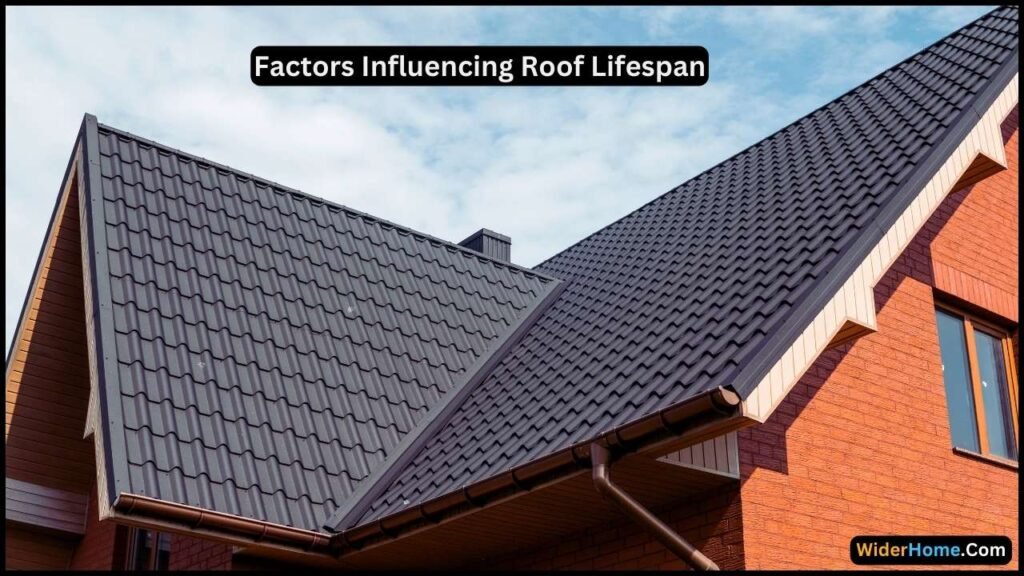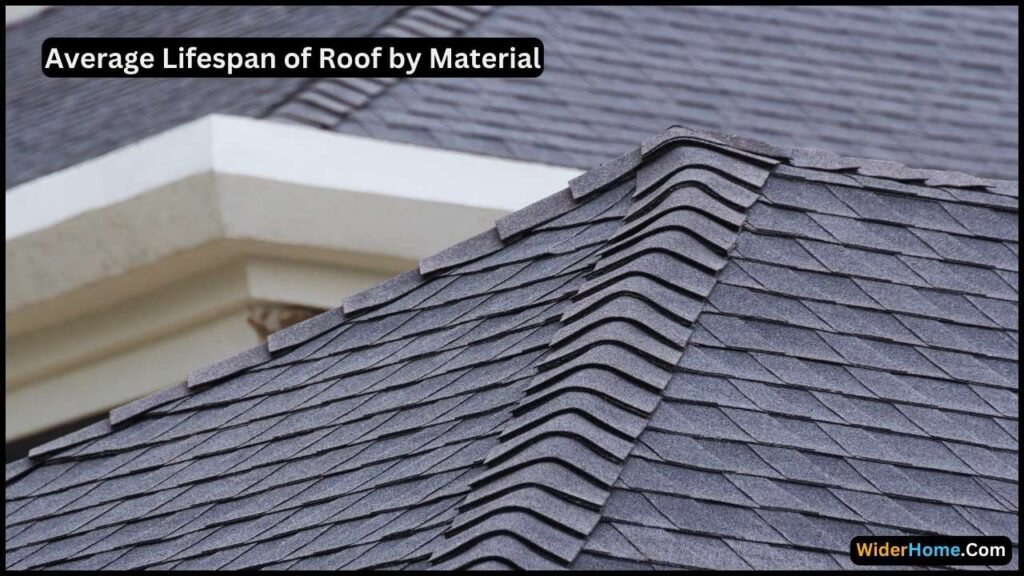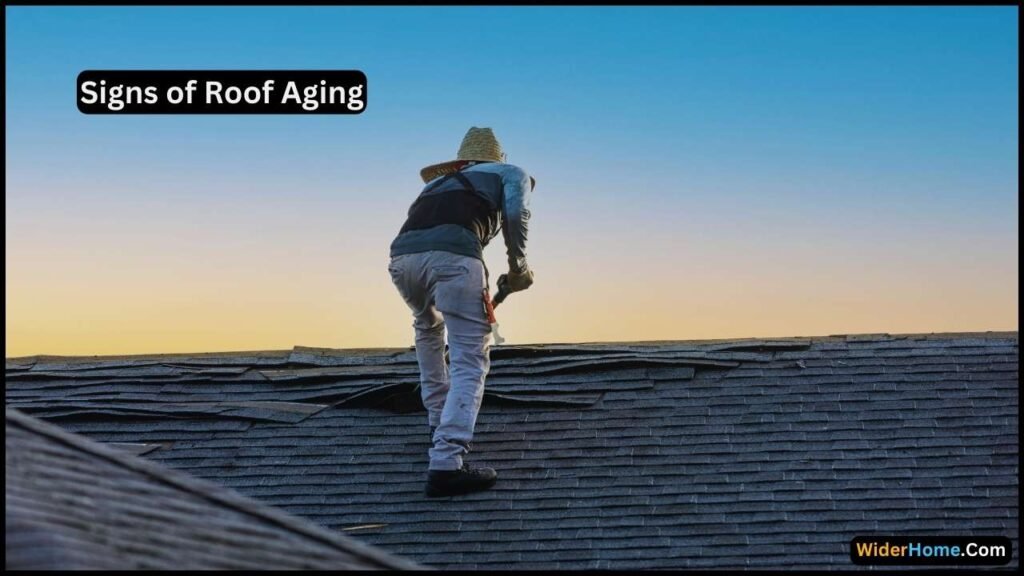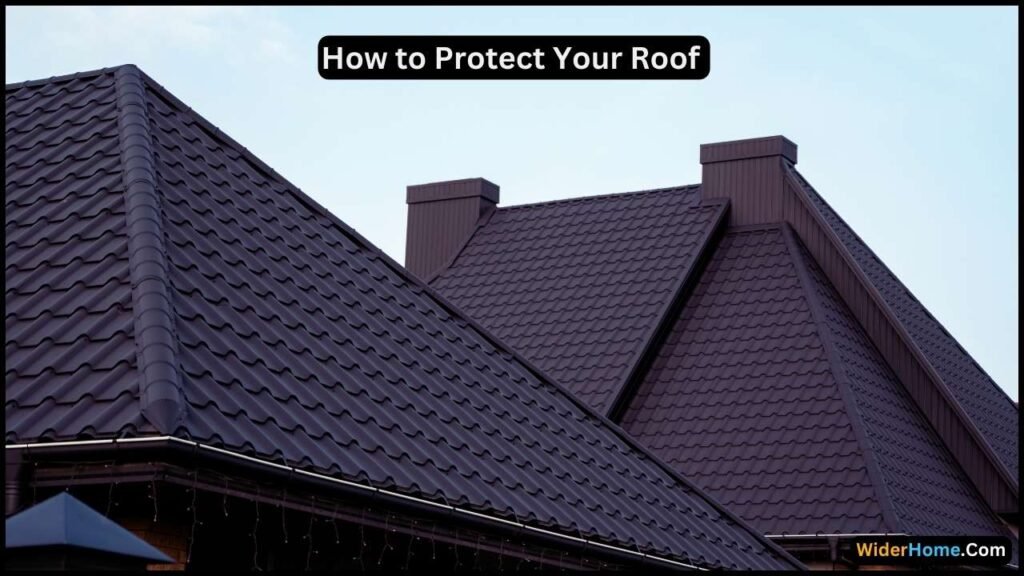How Long Does a Roof Last in NJ?

One of the most essential parts of your house is the roof, which shields you and your possessions from the weather. Knowing how long a roof usually lasts and when it might need to be replaced can make planning and budgeting for future repairs or replacements easier.
This is particularly crucial in New Jersey, where different weather patterns can shorten a roof’s lifespan. The type of roofing material you choose, the local climate, the caliber of the installation, and regular maintenance all significantly impact how long your roof will endure.
We’ll go over each of these aspects in-depth in this article to assist you in making well-informed choices regarding your roofing requirements.
Factors Influencing Roof Lifespan

The lifespan of your roof can be affected by several things. These are the principal ones:
Type of Roofing Material
The lifespans of different materials vary. For instance, metal roofs can endure 40–70 years, whereas asphalt shingles typically last 15–30 years. Slate roofs are the longest-lasting roofing material, lasting 75–100 years. Wood shakes or shingles can last 20–40 years, while clay or concrete tiles might endure 50 or more.
Weather Conditions
New Jersey’s environment may impact the lifespan of your roof. Rainfall, ice, snowfall, hot summers, and freezing winters can all damage your roof and accelerate its deterioration.
Installation Quality
It really matters how nicely your roof is installed. Professional installation is essential because faults made during installation might limit the roof’s lifespan. Always get qualified experts to install your roof.
Maintenance and Repairs
Routine maintenance ensures that your roof remains in good condition. Regular inspections, prompt resolution of minor problems, gutter cleaning, and debris removal can all contribute to a more extended roof. Ignoring maintenance can eventually result in more severe and expensive issues.
Average Lifespan of Roof by Material

When it’s time to replace your roof, knowing how long various roofing materials typically last will help you make an informed choice. Here’s a quick summary:
Asphalt Shingles
Because they are inexpensive and straightforward to install, asphalt shingles are one of the most popular types of roofing material. Depending on the installation and shingle quality, they often last 15 to 30 years.
Metal Roofs
Metal roofs are renowned for being long-lasting and resilient. Their lifespans range from 40 to 70 years. Because they can withstand harsh weather, metal roofs are a popular option for long-term investments.
Wood Shakes or Shingles
Wooden shingles or shakes have a natural appearance and have a 20–40 year lifespan. However, elements like care and temperature can shorten its lifespan. Their lifespan can be increased with regular treatments.
Clay or Concrete Tiles
Clay and concrete tiles are exceptionally robust, with an average lifespan of up to 50 years. They are perfect for long-lasting protection because of their excellent resistance to adverse weather conditions.
Slate Roofs
The longest-lasting roofing material is slate, which has an impressive 75 to 100 years of longevity. Even though slate costs more initially, its lifetime frequently makes up for it.
Knowing how long these common roofing materials typically last can help you select the best solution to suit your needs and guarantee that your house is safe for many years.
Signs of Roof Aging

By identifying the telltale indicators of an aging roof, you may address concerns before they get out of hand. The following are the leading indicators to watch out for:
Physical Wear and Tear
- Curling or Missing Shingles: A roof with curled or missing shingles is more susceptible to water damage.
- Cracked or Damaged Tiles: Broken tiles may reveal the underlayment, which could cause leaks.
- Rust or Corrosion in Metal Roofs: Spots rusted or corroded are signs that the metal is failing and could jeopardize the roof’s structural integrity.
Structural Issues
- Leaks and Water Damage: Water stains on your walls or ceiling are unmistakable signs that your roof leaks.
- Sagging Roof Structure: If your roof seems drooping or sagging, it may have structural damage that requires quick care.
- Mold or Mildew Growth: These growths are ugly but signal moisture issues that could compromise the roof’s structural integrity.
How to Protect Your Roof?

You may significantly increase the lifespan of your roof and avoid expensive repairs by taking proactive measures to safeguard it. Here’s how to go about it:
Regular Inspections
Do routine roof checks at least twice yearly, in the spring and fall. Look for damage indicators like leaks, cracks, or missing shingles. It’s also a good idea to check your roof during extreme weather.
Clean Gutters
Maintain clean and debris-free gutters and downspouts. Water backup from clogged gutters can harm your roof. Routine cleaning ensures leak prevention and appropriate water drainage.
Trim Overhanging Branches
Cut back on any branches and trees that hang over your roof. Address moss and algae. Falling branches can harm the roof, and overhanging limbs can drop leaves and other debris, leading to moisture buildup and decomposition.
Address Moss and Algae
Watch out for the growth of moss and algae, as these can harm shingles and result in leaks. To handle them safely, engage an expert or use bleach and water to clear them off.
Ensure Proper Ventilation
Shingles can deteriorate due to heat and moisture buildup, which can be avoided with a well-ventilated roof. Ensure your attic has enough ventilation to keep your roof in good condition.
Prompt Repairs
Address minor problems immediately to keep them from growing into larger ones. This entails fixing wear and tear indicators, caulking leaks, and replacing missing shingles.
Avoid Walking on the Roof
Walking on your roof can damage its shingles and other components. Restrict access to the roof to experts with the necessary tools and background.
By taking these easy precautions, you can guarantee that your roof offers your house long-lasting protection. Prompt repairs and routine maintenance are essential to averting expensive problems later on.
FAQs
How often should I inspect my roof?
At least two yearly roof inspections are advised, preferably in the spring and fall. Inspecting your roof for any recent damage following severe weather, such as snowfall or intense storms, is also a good idea.
What are the main signs that my roof needs to be replaced?
Significant shingle curling or missing shingles, broken or cracked tiles, rust or corrosion on metal roofs, continuous leaks, drooping structures, and the spread of mold or mildew indicate that your roof may need to be replaced.
How much does it cost to replace a roof in NJ?
The size of your roof, the kind of roofing materials you choose, and the complexity of the installation all affect the cost of replacing a roof in New Jersey. An asphalt shingle roof typically costs homeowners between $5,000 and $10,000.
Slate and metal are more expensive materials, costing up to $25,000. Obtaining numerous quotes from trustworthy contractors is the best way to ensure you get a reasonable price for your particular demands.
What is the most cost-effective roof replacement?
Asphalt roof replacements are usually the most affordable. They are popular with many homeowners since they are widely available, reasonably priced, and long-lasting. They often offer a decent combination between affordability and performance, with installation costs ranging from $5,000 to $10,000.
Can I perform roof repairs myself?
While the homeowner can complete minor repairs, like cleaning the gutters or changing a few shingles, it’s always best to employ a professional for more extensive repairs or replacements to guarantee the job is done correctly and safely.
How can I extend the lifespan of my roof?
The secret is to maintain things regularly. This includes clearing out debris from gutters, performing biennial inspections, making minor repairs immediately, and ensuring your attic has enough insulation and ventilation.
Is it necessary to remove the old roof before installing a new one?
The state of the current roof and the applicable construction codes will determine this. If the existing roof is in good condition, it may occasionally be replaced; however, in most circumstances, it is preferable to remove the old roof to address any underlying problems and guarantee that the new roof is fitted correctly.
How do New Jersey’s weather conditions specifically affect my roof?
The different climates in New Jersey can significantly impact the life of your roof. Hot summers can cause roofing materials to expand and contract, resulting in Wear and strain. Regular maintenance is crucial because various factors, including cold winters, heavy snowfall, ice, rain, and humidity, can damage roofs.
When is the best time of year to replace a roof in New Jersey?
In New Jersey, spring and fall are usually the optimum seasons to replace a roof. These seasons provide mild weather by avoiding the intense heat of summer and the bitter cold of winter, which can impede and complicate the roofing process.
How often do you need to replace a roof in NJ?
The type of roofing material and its level of maintenance determine how often a roof needs to be replaced in New Jersey. Commonly used asphalt shingles require replacement every 15 to 30 years on average.
More robust materials, such as slate or metal, have a substantially longer lifespan—often up to fifty years. However, severe weather, shoddy installation, and neglect can shorten any roof’s lifespan.
Routine inspections and timely repairs can prolong the life of your roof and postpone the need for replacement.
Conclusion
In conclusion, several variables, such as the roofing material, local climate, level of installation, and regular upkeep and repairs, affect how long your roof will last in New Jersey. While slate and metal are more robust and can last much longer, asphalt shingles usually endure 15 to 30 years. New Jersey’s varied environment, with its scorching summers, chilly winters, and heavy precipitation, presents several difficulties that, if left unchecked, might reduce the lifespan of roofs. Professional installation is essential for your roof to last as long as possible, as is routine maintenance to catch little problems early on. By comprehending these elements and careful roof maintenance, you may more effectively prepare for future replacements and avert unforeseen costs.
